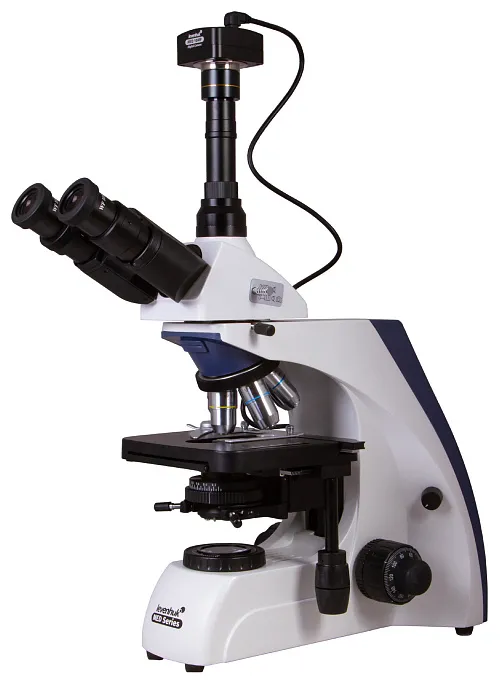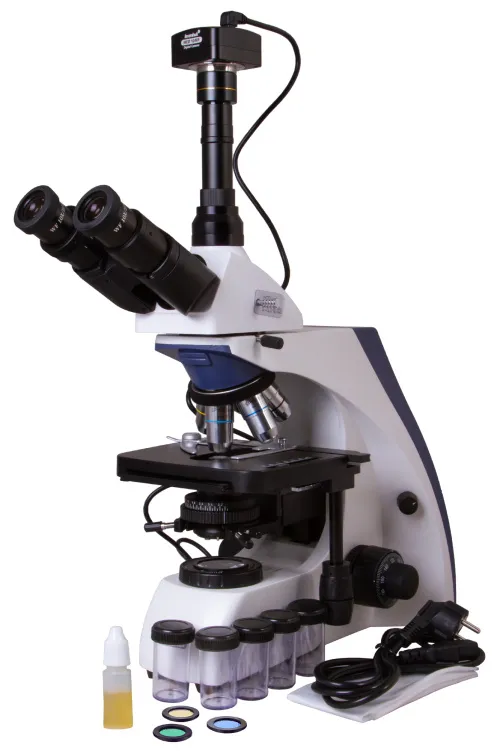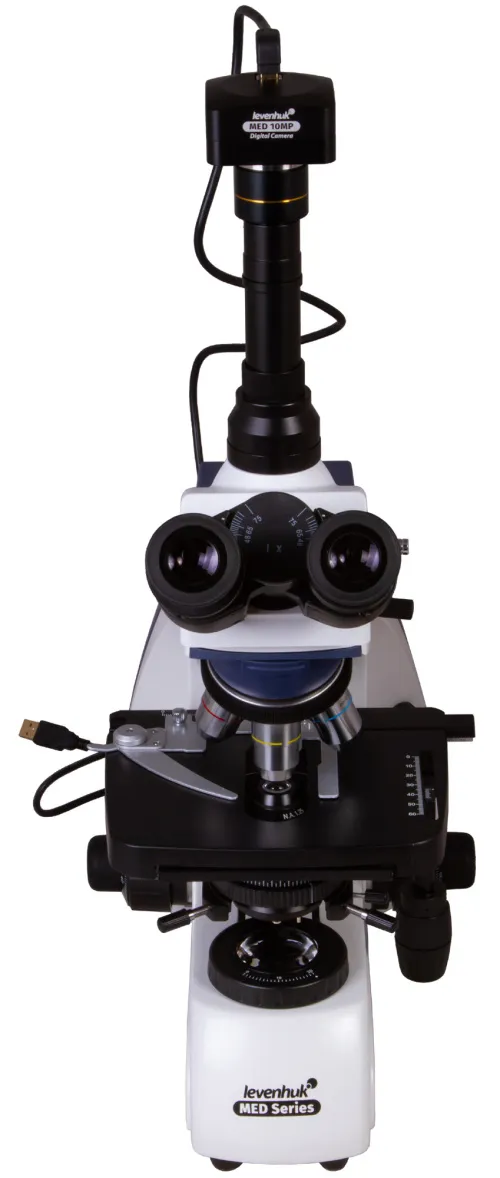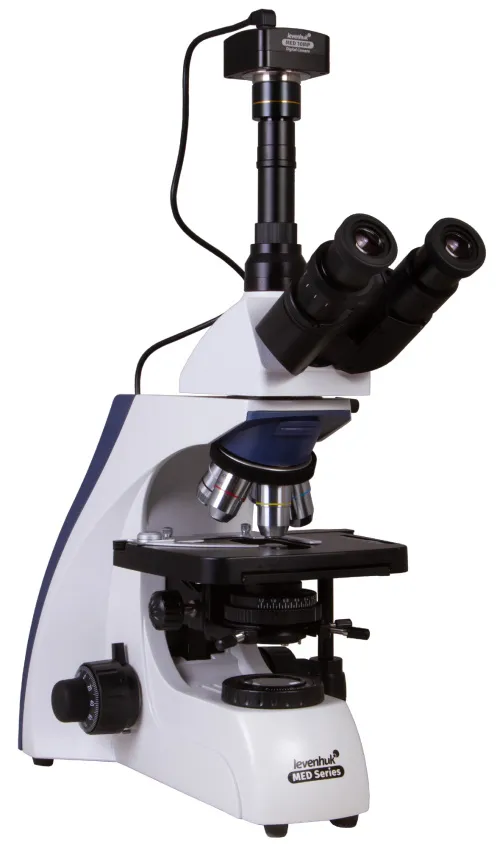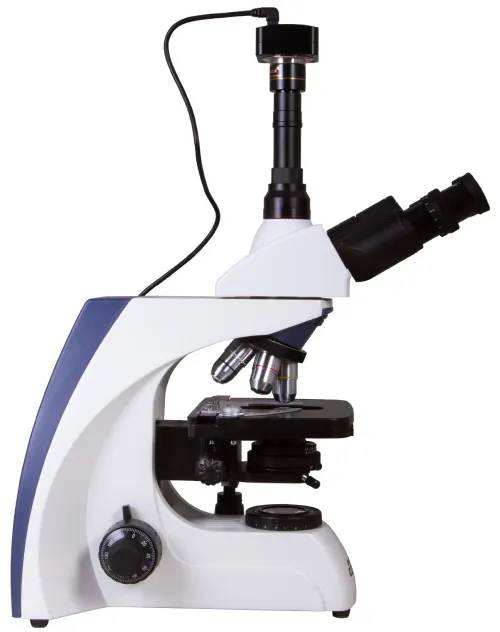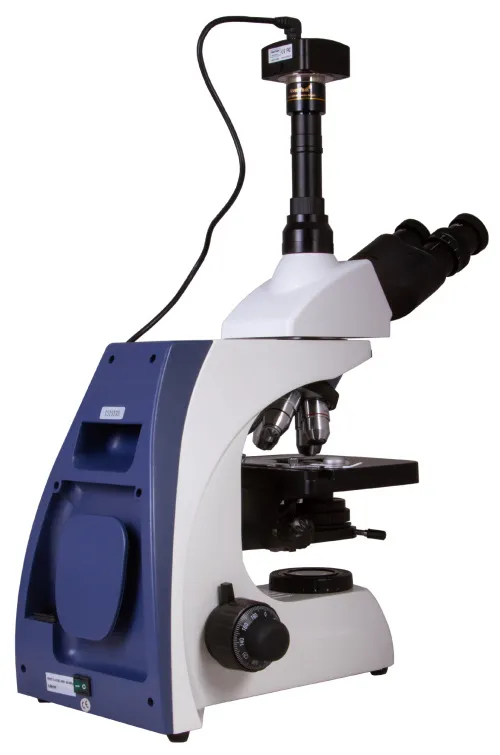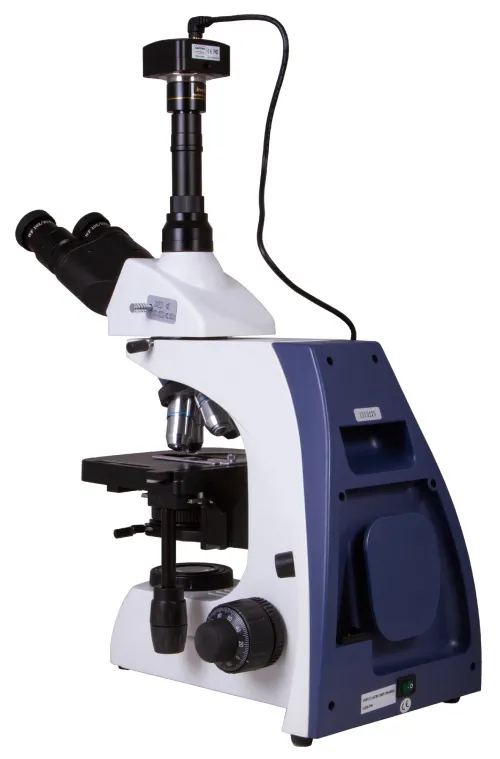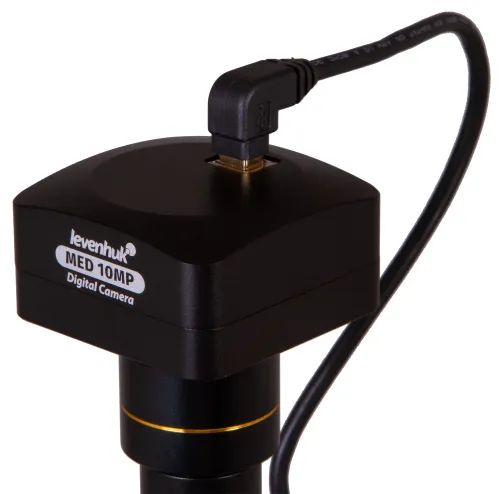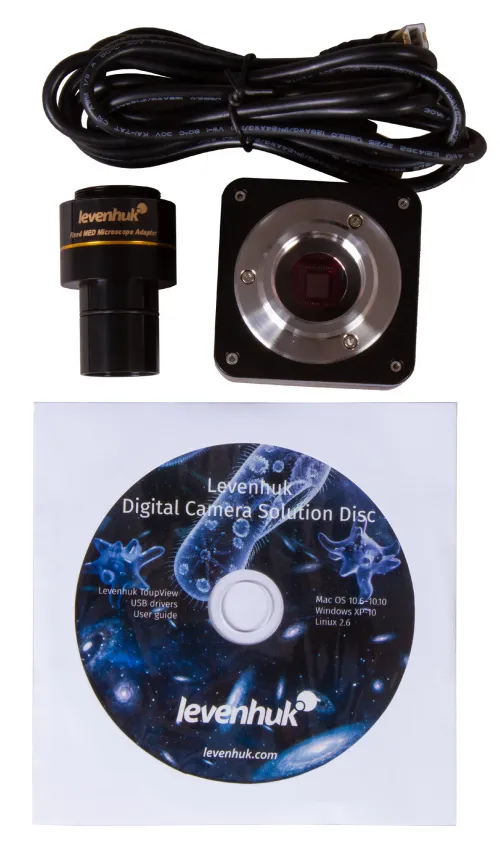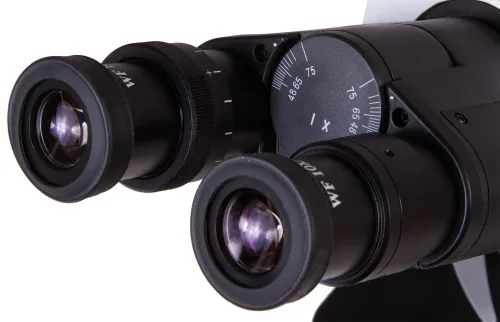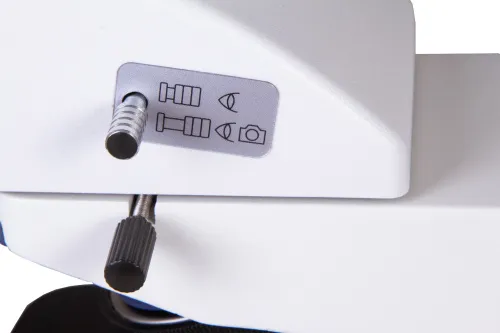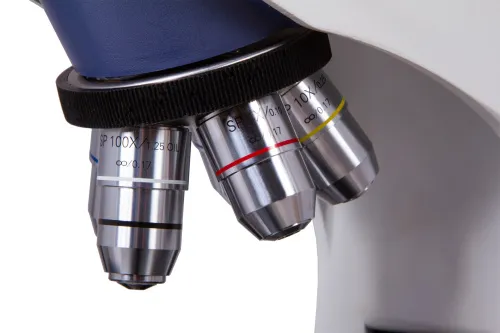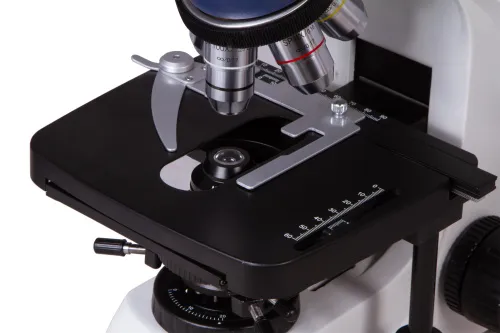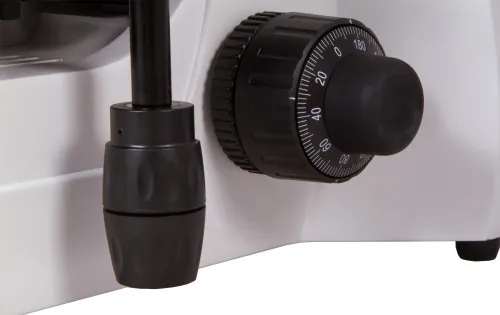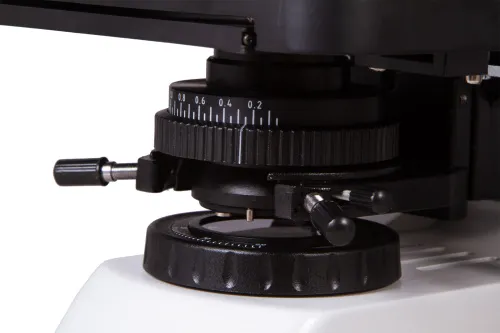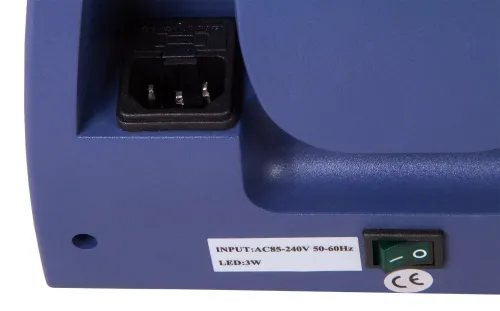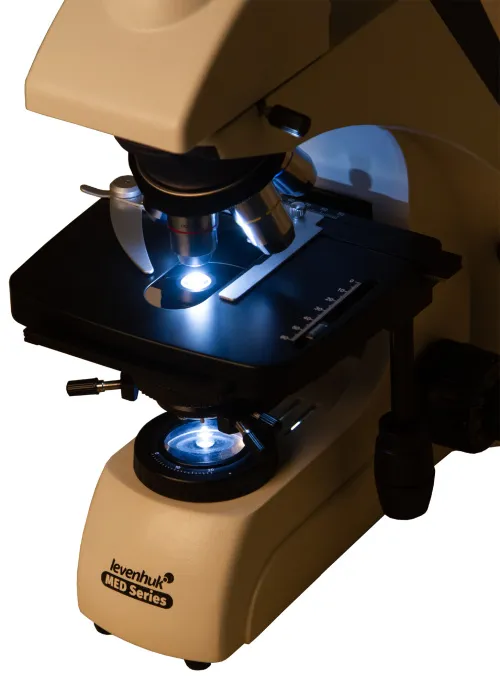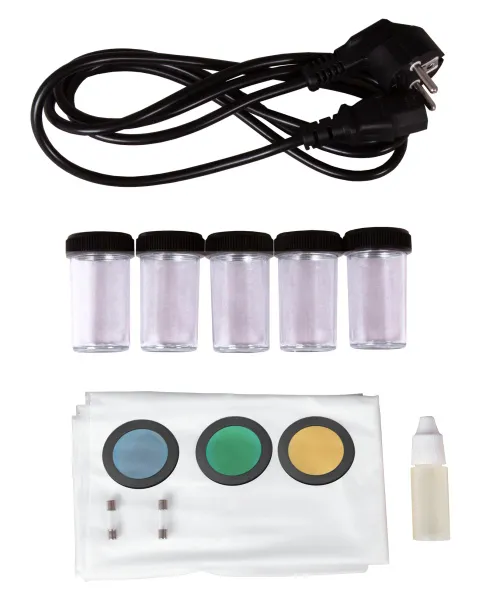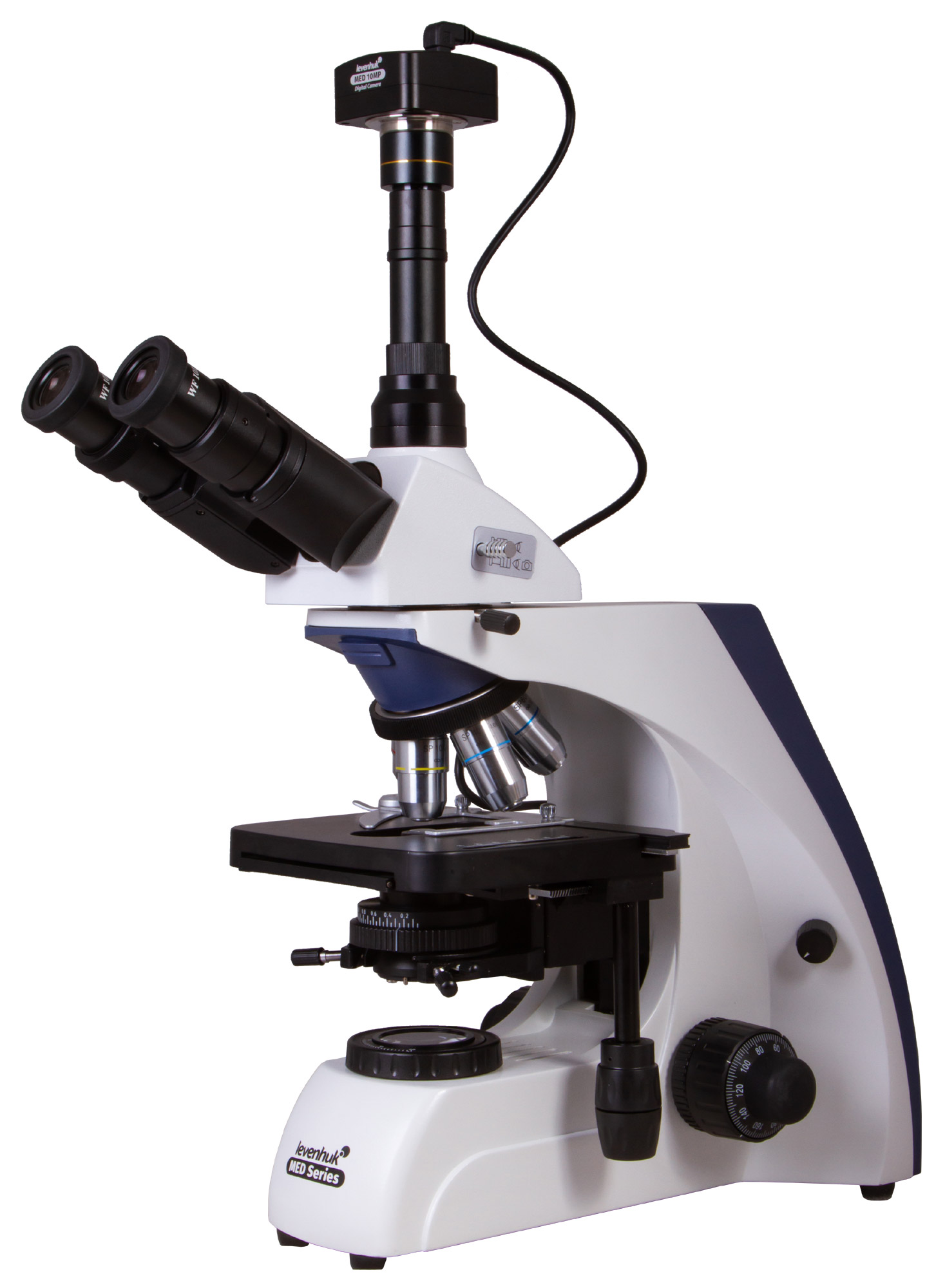Levenhuk MED D30T Digital Trinocular Microscope
Magnification: 40–1000x. Trinocular head, 10MP digital camera, infinity-corrected semi-plan achromatic objective lenses, an Abbe condenser with an iris diaphragm
| Product ID | 73998 |
| Brand | Levenhuk, Inc., USA |
| Warranty | lifetime |
| EAN | 5905555005003 |
| Package size (LxWxH) | 62x35x28 cm |
| Shipping Weight | 10.68 kg |
Levenhuk MED D30T trinocular microscope combines the advantages of a regular optical and digital optical model. It can be used for classic observations of a micro world, and also for broadcasting, taking pictures of specimens, and recording videos of research. This microscope is designed for professionals in various scientific fields. Infinity-corrected semi-plan achromatic optics, ability for setting up Köhler illumination, and a 10MP digital camera allow for the effective use of Levenhuk MED D30T for solving a wide range of tasks.
Semi-plan achromatic infinity-corrected optics
The microscopes in the Levenhuk MED 30 series are equipped with an infinity-corrected optical system that is used in professional and high-class microscopes. This system includes Infinity SemiPlan objectives and allows for obtaining clear, high contrast images with high level of flatness.
One of the most important features of an infinity-corrected optical system is that it allows for installing any additional parts in the optical path between objective lenses and an ocular tube. The additional parts include polarizers, (all Levenhuk MED 30 Microscopes feature a special slot for installing them) and epi-fluorescence light. All in all, modular design and simple operation make Levenhuk MED 30 optimal microscopes for using in different kinds of microscopy and working in hematological, histological, microbiological, and other laboratories.
Capabilities of the optical system
The microscope features a trinocular head with a beam splitter: a vertical tube is used for fixing a digital camera (included) and a binocular head allows for observing with both eyes. A visual part has a 30° inclination angle, the head is 360° rotatable. The microscope is convenient for lengthy observations when conducting research in a group. Wide-field eyepieces provide a good view and 10x magnification. They feature a diopter adjustment, which allows for setting up optics precisely for each customer. A revolving nosepiece contains five objective lenses, three of them with a more powerful magnification have spring-loaded frames. Oil immersion can be used during observations through a 100x objective lens. All of the optics are protected with an anti-fungal coating.
A 10M digital camera for capturing photos and videos
The digital camera uses a 10MP sensor, which allows for taking pictures in high resolution and recording videos with a high frame rate. A camera is connected to a computer via an included USB cable and transmits an image in real-time mode to it. Special software, which you can install from the included CD, allows for image processing and setting up camera parameters. The software allows for adjusting size, image brightness and contrast, exposure time and white balance, calibrating a camera and objective lenses, measuring specimens or structures (several measurement units are available). A digital camera makes work in a laboratory easy and convenient, as it allows for conducting research by observing through the eyepieces instead of a computer screen, which significantly reduces eyestrain.
Convenient work with microscope slides
The stage is equipped with a mechanical scale. Sharpness adjustment is done by rotating the coarse and fine focusing. An Abbe condenser is equipped with an iris diaphragm. The light is located in the lower part of the microscope and consists of a 3W LED with an additional lens for ultimate brightness. Setting up Köhler illumination is available. The brightness is adjustable. It is powered by an AC power supply.
Features:
- Trinocular head with a beam splitter, magnification range of 40x to 1000x
- Infinity-corrected semi-plan achromatic optics
- The eyepieces and objective lenses have an anti-fungal coating
- Enhanced LED light with brightness adjustment
- Köhler illumination is available
- Powered by an AC power supply
- 10MP digital camera is included
The kit includes:
- Microscope base with a stand
- 360° rotatable trinocular head
- Infinity-corrected semi-plan achromatic objective lenses: 4x, 10x, 40xs, 60xs, 100xs (oil) with an anti-fungal coating
- Wide-field eyepieces: WF10x/22mm with an anti-fungal coating (2 pcs)
- Abbe condenser N.A. 1.25 with an iris diaphragm
- Filters: blue, green, yellow
- Bottle of immersion oil
- Fuse (2 pcs)
- Power cord for microscope
- Dust cover
- 10MP digital camera
- Camera adapter
- Camera mount
- USB cable for connecting and powering camera
- Software CD and drivers
- User manual and lifetime warranty
Caution:
Please refer to the specifications table for the correct mains voltage and never attempt to plug a 110V device into 220V outlet and vice versa without using a converter. Remember that mains voltage in the U.S. and Canada is 110V and 220–240V in most European countries.
Some things you can see under a microscope:





Levenhuk MED D30T Digital Trinocular Microscope is also compatible with other Levenhuk digital cameras (additional cameras are purchased separately). Levenhuk cameras are installed in the eyepiece tube instead of an eyepiece. This microscope is also compatible with any other digital microscope cameras.
| Product ID | 73998 |
| Brand | Levenhuk, Inc., USA |
| Warranty | lifetime |
| EAN | 5905555005003 |
| Package size (LxWxH) | 62x35x28 cm |
| Shipping Weight | 10.68 kg |
| Type | biological, light/optical, digital |
| Microscope head type | trinocular |
| Optics material | optical glass with anti-fungal coating |
| Head | 360 ° rotatable, with switching (dividing) luminous flux |
| Head inclination angle | 30 ° |
| Magnification, x | 40 — 1000 |
| Eyepiece tube diameter, mm | 23.2 mm (third vertical tube), 30mm (binocular head) |
| Eyepieces | WF10x/22mm (2 pcs.) |
| Objectives | infinity-corrected semi-plan achromatic objective lenses: 4x, 10x, 40xs, 60xs, 100xs (oil) |
| Revolving nosepiece | for 5 objectives |
| Interpupillary distance, mm | 48 — 75 |
| Stage, mm | 180x160 |
| Stage moving range, mm | 80/50 (movement in horizontal (X and Y) directions) |
| Coarse focusing travel, mm | 20 |
| Stage features | mechanical double-layer |
| Eyepiece diopter adjustment, diopters | ±5 |
| Condenser | Abbe N. A. 1.25 with an iris diaphragm |
| Diaphragm | iris |
| Focus | coaxial, coarse (0.5 mm) and fine (0.002 mm), with rack and pinion |
| Body | metal |
| Illumination | LED |
| Brightness adjustment | ✓ |
| Power supply | 100–240V |
| Light source type | 3W, with an extra lens |
| Light filters | blue, green, yellow |
| Additional | Köhler illumination, collector lens |
| User level | experienced users, professionals |
| Assembly and installation difficulty level | complicated |
| Application | laboratory/medical |
| Illumination location | lower |
| Research method | bright field |
| Pouch/case/bag in set | dust cover |
| Megapixels | 10 |
| Sensor element | 1/2.3" |
| Pixel size, μm | 1.67x1.67 |
| Video recording | yes |
| Image format | *.jpg, *.bmp, *.png, *.tif and others |
| Video format | output: *.wmv, *.avi, *.h264 (Windows 8 and later), *h265 (Windows 10 and later) |
| Spectral range, nm | 380–650 |
| White balance | automatic, manual |
| Exposure control | 0.4–2000μs |
| Sensitivity, V/lux-sec@550nm | 0.31 |
| Frame rate | 3.3@3584x2748 11@1792x1374 38@896x684 |
| Dynamic range, dB | 65.2 |
| Usage location | the third 23.2mm ocular tube of the microscope |
| Software, drivers | LevenhukLite |
| Programmable options | brightness, image size, shutter time |
| Output | USB 2.0 |
| System requirements | Windows 8/10/11 (32bit and 64bit), Mac OS X, Linux, up to 2.8GHz Intel Core 2 or higher, minimum 2GB RAM, USB 2.0 port, CD-ROM |
| Camera power supply | via USB cable |
and downloads
We have gathered answers to the most frequently asked questions to help you sort things out
Find out why studying eyes under a microscope is entertaining; how insects’ and arachnids’ eyes differ and what the best way is to observe such an interesting specimen
Read this review to learn how to observe human hair, what different hair looks like under a microscope and what magnification is required for observations
Learn what a numerical aperture is and how to choose a suitable objective lens for your microscope here
Learn what a spider looks like under microscope, when the best time is to take photos of it, how to study it properly at magnification and more interesting facts about observing insects and arachnids
This review for beginner explorers of the micro world introduces you to the optical, illuminating and mechanical parts of a microscope and their functions
Short article about Paramecium caudatum - a microorganism that is interesting to observe through any microscope

